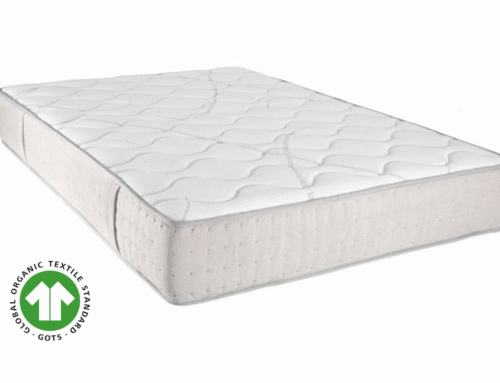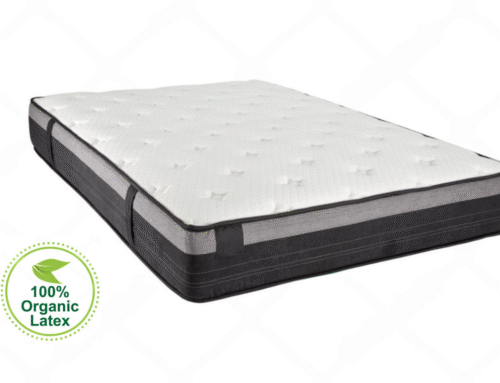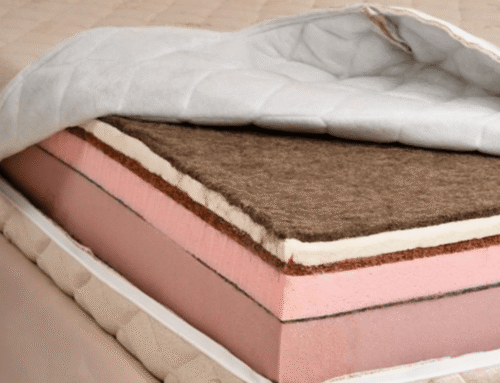Latex mattresses need a little extra care when it comes to storage. They don’t handle heat, humidity, or heavy pressure well. If you leave one in a damp or closed-off space, the material can break down faster. That’s why air circulation is just as important as cleanliness. The best spot is somewhere cool, dry, and away from direct sunlight. This helps the mattress keep its shape and last longer.
It also helps to know what makes latex different. Unlike memory foam or standard foam, latex doesn’t compress well for long periods. Trying to fold or vacuum-seal it will cause permanent damage, especially around the seams and edges. The safer option is to either lay it flat on a surface that supports the whole mattress or roll it loosely without forcing it tight. That way, the structure stays intact.
Before you store it, make sure the mattress is completely clean and dry. Any leftover moisture can turn into mold or leave behind bad smells. Once it’s ready, cover it with a breathable bag or wrap it in a cotton sheet before adding a layer of plastic. This stops dust and dirt while still letting the mattress breathe.
When handled the right way, your latex mattress can sit in storage for a long time without losing its quality. The key is keeping it dry, supported, and protected from heat or pressure.
Key Takeaways
- Keep the mattress flat, clean, and in a cool, dry place. This helps it stay in good shape for longer.
- Don’t fold, bend, or vacuum-seal it. Doing that can cause cracks, stress on the edges, and damage that won’t go away.
- Use a breathable fabric cover, not plastic. Fabric allows airflow and helps prevent mold, moisture, and odors from building up.
- Rotate the mattress every few months while it’s in storage. This keeps the surface even and avoids deep impressions.
- Don’t put heavy items on top of it. Extra weight can leave dents and weaken the support over time.
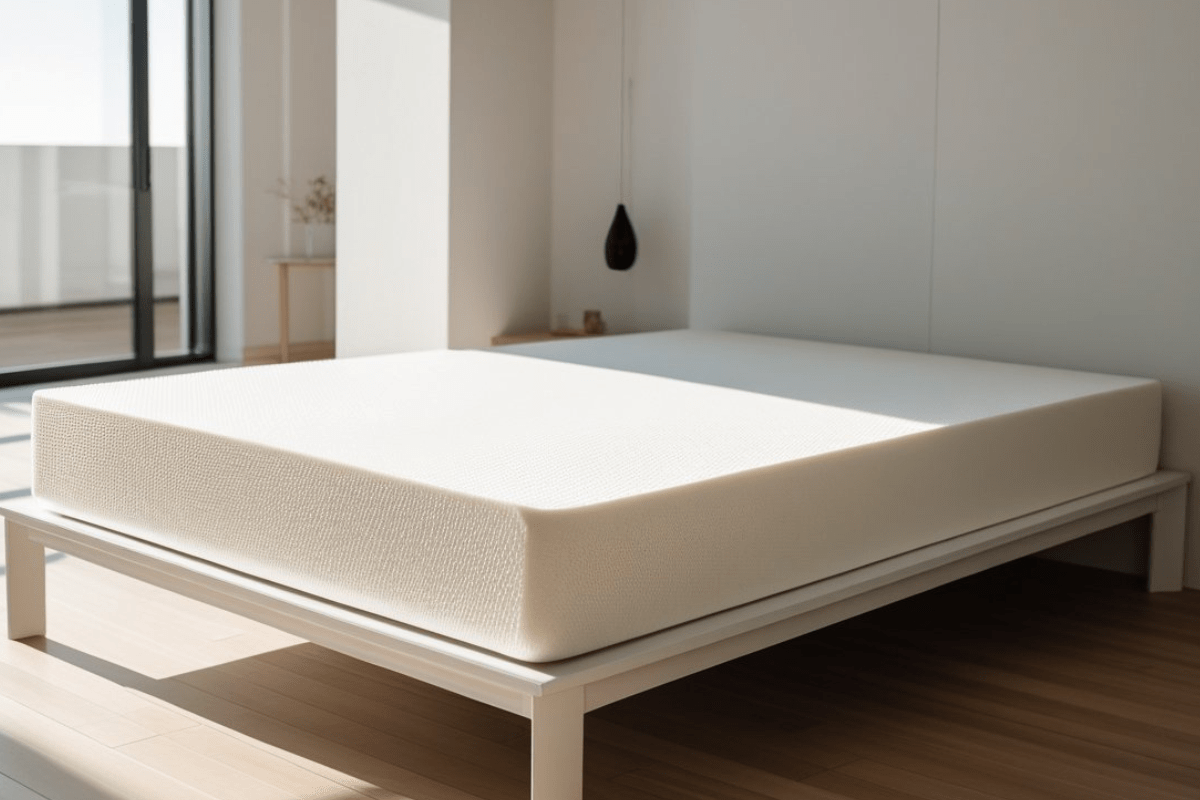
Why Latex Mattresses Need Special Care
Latex mattresses are made from natural or blended rubber. They usually last longer and stay cooler than foam or spring beds. But the same material that makes them breathable can also react to heat, moisture, and heavy pressure over time. That’s why keeping one in a stable indoor environment is more important than most people realize. How long your mattress lasts, how it smells, and even how comfortable it feels all depend on how well you care for it.
Latex doesn’t behave like coils or memory foam. If it’s stored in a place without enough air, it can lose its shape and firmness. Sunlight, humidity, and sudden changes in temperature wear it down faster and weaken its support. If it sits in a damp room or stays wrapped in plastic too long, it can even grow mildew or start to break apart.
The best way to keep a latex mattress in good condition is simple: store it flat, clean it regularly, and let it breathe. Use a cover made from breathable fabric instead of plastic. Flip or rotate it from time to time so it wears evenly and doesn’t form dips or cracks. Latex doesn’t require much work, but a little care goes a long way. When you keep its natural qualities in mind, it can stay comfortable for many years.
Clean The Mattress First
Before you put a latex mattress in storage, it’s important to clean it. Sweat, oils, and dirt left on the surface can cause mildew or even attract bugs. A quick vacuum helps clear dust and hidden debris right away.
Start by removing everything from the bed—sheets, mattress pads, and protectors. Use the brush attachment on your vacuum to go over the whole surface, paying extra attention to seams and edges where dust collects. If you see stains or spills, a little mild soap with a damp cloth is enough. The mattress must be completely dry before you pack it up. Even a small amount of moisture can create mold or bad odors while it sits in storage. Skipping this step can ruin the mattress over time.
Use A Breathable Mattress Bag
Covering a mattress in plastic might sound like an easy fix, but it usually creates more problems than it solves. Plastic doesn’t breathe. Once moisture gets trapped, it stays inside, and that leads to mold or mildew. If you’re storing a mattress for more than a short time, especially in a basement or garage, it’s better to use a bag that allows airflow.
Thick fabric bags with a waterproof coating are a safer choice. They keep dust and dirt away but still let air move around. This prevents that damp, musty smell and keeps the mattress in better shape. You can find these bags online or at stores that sell moving supplies.
Latex mattresses need even more care as they break down faster if air can’t move through the material. Storing one in a vacuum-sealed bag or anything airtight may damage it over time. Leaving space for airflow helps preserve the mattress so it lasts longer, even if it’s stored away for months.
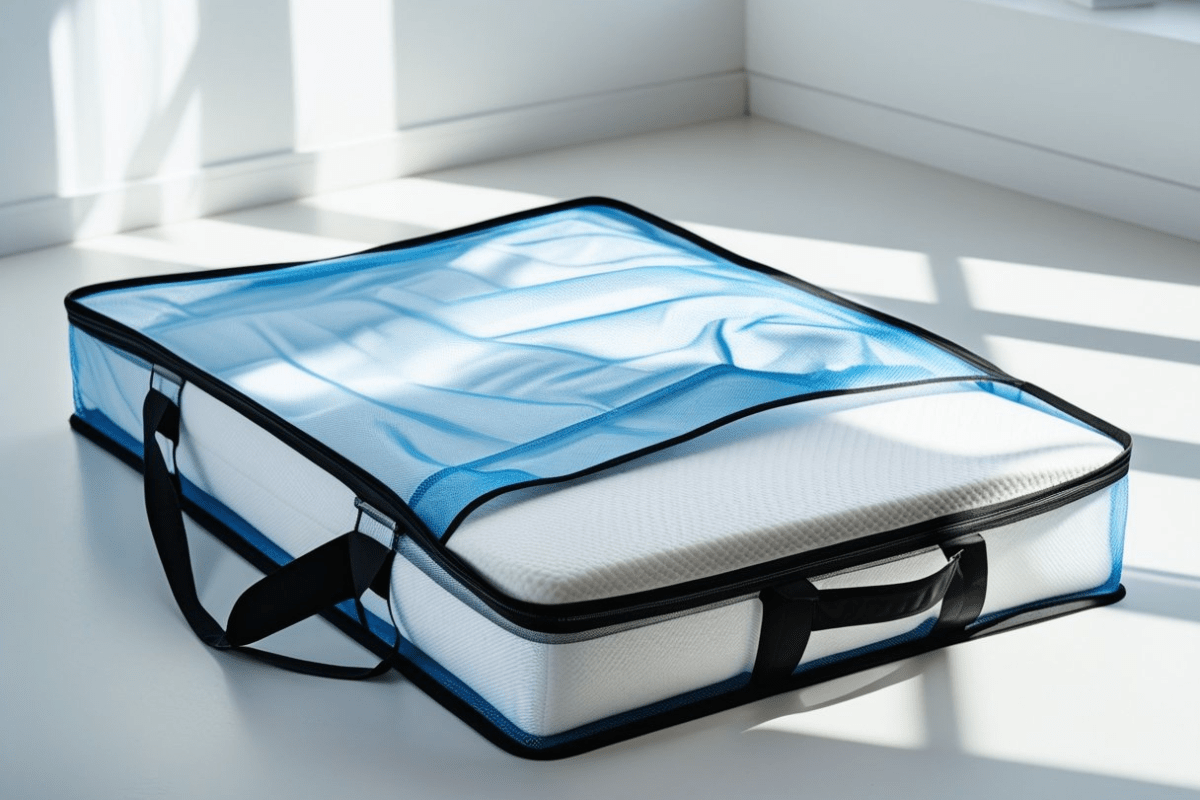
Store It Flat (If You Can)
The best way to store a latex mattress is to keep it flat. When it’s lying flat, the weight spreads out evenly. This helps the mattress hold its shape and stops pressure spots or uneven wear. People who store their mattress flat for a long time often say it still feels supportive when they use it again.
Storing it on its side or folding it might seem easier, but that usually causes problems. Latex is heavy and flexible, so gravity pulls on it if it’s not lying flat. Over time, the foam may sag or stop bouncing back the way it should.
If you don’t have much space, you can keep it on its side for a short time, about six weeks or less. But you’ll need to rotate it every few days so one end doesn’t start bending or curving. Keeping it upright for months isn’t a good idea. It puts the mattress at risk of losing its support.
No matter how you store it, be careful when moving it. Latex mattresses are heavy and bulky. Lifting or bending them the wrong way can damage the foam. If you handle it gently and store it flat, the mattress will last much longer.
Choose A Cool, Dry Storage Space
Latex doesn’t hold up well in heat or damp spaces. Even a little humidity can lead to mold or soft spots since latex soaks it up fast. A small dehumidifier goes a long way. Keeping it dry from the start saves you money and stress later.
To keep it in good shape, store it in a cool, dark room where the air can move around. A climate-controlled space or a basement with decent airflow works better than a packed closet or garage. Avoid putting it in places that trap heat or cold, like attics or plastic sheds. Big temperature swings break latex down over time. What matters most is steady airflow because it keeps things dry and stops that stale smell from setting in.
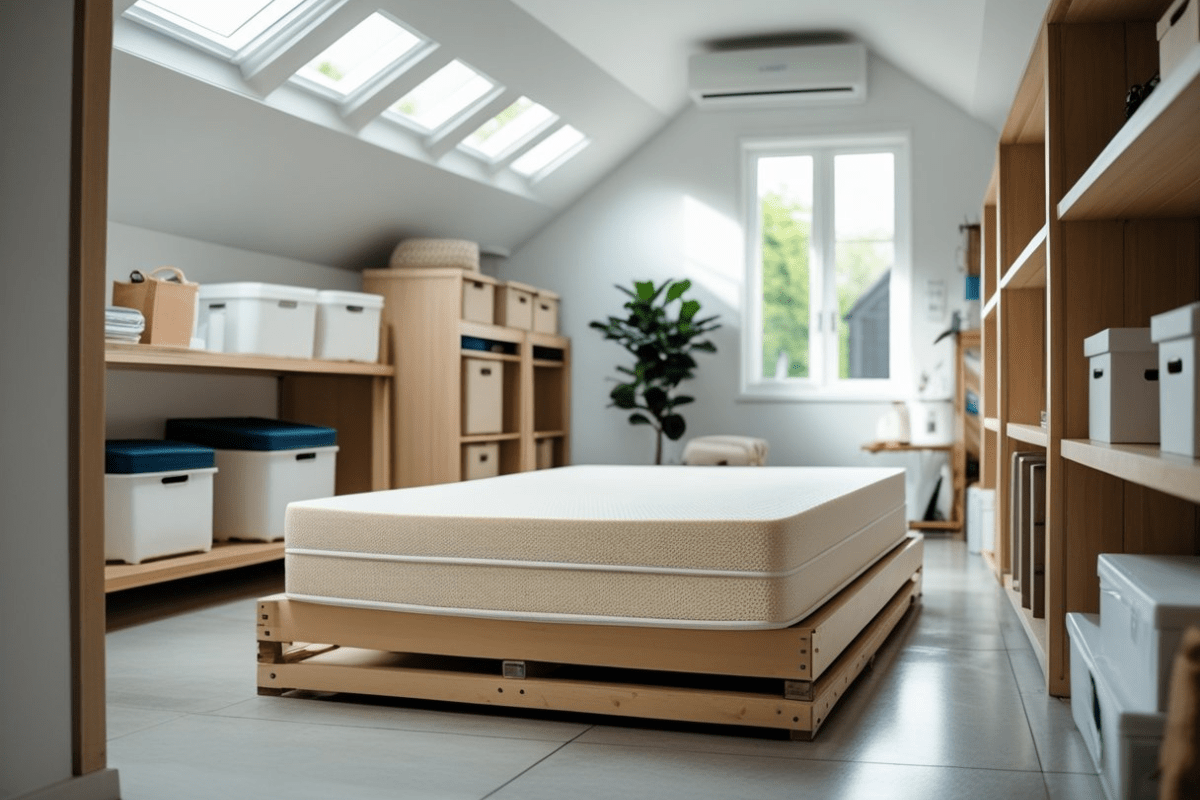
Don’t Stack Heavy Items On Top
Latex mattresses need room to breathe. If you stack heavy stuff on top like furniture, boxes, or even another mattress, you’re asking for trouble. That weight doesn’t just go away. Over time, it pushes into the latex, leaving dents or even tiny tears that don’t fix themselves.
Even smaller things can cause damage. A chair leg, a box corner, or any hard object left sitting on the surface can press down and leave marks that never bounce back. Latex is made to support people lying on it, not the pressure of storage piles that sit for months. Constant pressure wears the material down faster than you’d think.
If you need to store a latex mattress, never stick it at the bottom of a stack. Keep it on top or put it aside on its own shelf. As long as it’s supported without extra weight pressing into it, the mattress will hold its shape and last much longer.
Protect Against Pests
Even if you keep your garage or shed spotless, pests still find a way in. Rodents and insects like quiet corners, and they often squeeze into spots near furniture or bedding. That’s why it helps to take a few steps before storing things away for a long time.
Baking soda is handy for cutting down extra moisture and stopping that musty smell from building up. For pests, natural options like cedar blocks or dried lavender work well. They keep bugs away without chemicals and won’t leave harsh smells on your clothes.
Before you pack up a mattress, look over the storage bag. A small tear is all it takes for mice or bugs to crawl in. A quick check now can save you the headache of finding damage later.
Rotate It During Long-Term Storage
Latex mattresses can lose their shape if they sit in storage for too long. Over time, the material settles, and that can lead to uneven spots or body impressions. The best way to avoid this is by rotating or flipping the mattress every few months. Doing this spreads out the pressure and helps it stay supportive when you use it again.
If a mattress sits untouched for six months or more, the materials may not bounce back the same way. But turning it regularly while it’s stored can stop certain areas from getting worn down. This simple step keeps the mattress firm and comfortable, even after a long break.
It’s easy to forget this task, especially if the mattress is tucked away in a spare room or storage unit. Setting a reminder on your phone or calendar helps. It doesn’t take much effort, and the payoff is worth it. A quick rotation here and there means your mattress will feel more supportive and last longer when you need it again.

Use a Mattress Topper (Optional)
If you have a mattress that doesn’t get much use, like one in a guest room or a vacation place, adding a topper is a smart idea. It works like a shield, keeping dust from settling straight onto the latex.
A topper also spreads out weight. That means the mattress won’t get dents or pressure spots from sitting too long in one position. This is handy if the bed is in storage or only gets slept on once in a while. And when someone does use the bed again, the topper makes it feel softer and less stiff. A mattress that’s been sitting can feel a bit flat, but the extra layer helps it feel more comfortable.
Cutting the latex mattress is another option if you need it to fit a smaller frame or a different setup. It lets you shape it the way you want while still keeping the topper for added protection and comfort.
Final Thoughts
Latex mattresses last longer than most other types, usually 15 to 20 years, but only if you take care of them. Storing one the wrong way can shorten its life or mess up its shape. With the right steps, you can keep it fresh and comfortable until you need it again.
The first thing to remember is where you put it. A latex mattress should stay in a dry, airy spot. Don’t leave it anywhere damp, and keep it out of direct sunlight. Moisture and heat can break down the material over time. Also, never fold or roll the mattress. Doing that can cause cracks or change its shape, and once that happens, it won’t feel the same again.
To protect it from dust, use a fabric cover that lets air pass through. Plastic covers might seem like a good idea, but they can trap moisture inside, which isn’t good for latex. A breathable cloth cover keeps the surface clean while letting the material stay in its natural condition.
If you’re not sure what works best, it helps to ask around. Other people who’ve stored latex mattresses may have tips that make the process easier. Sharing experiences can save you from mistakes and help you get more life out of your mattress.

